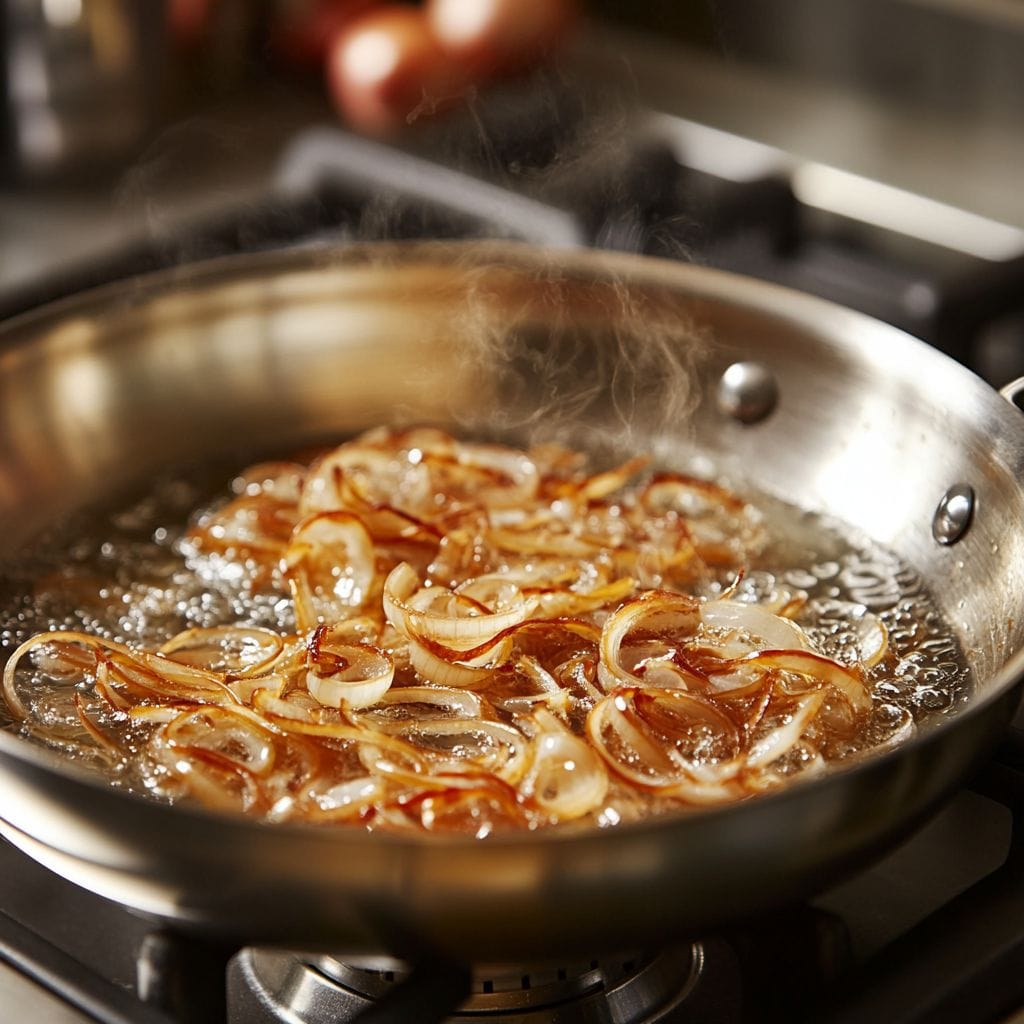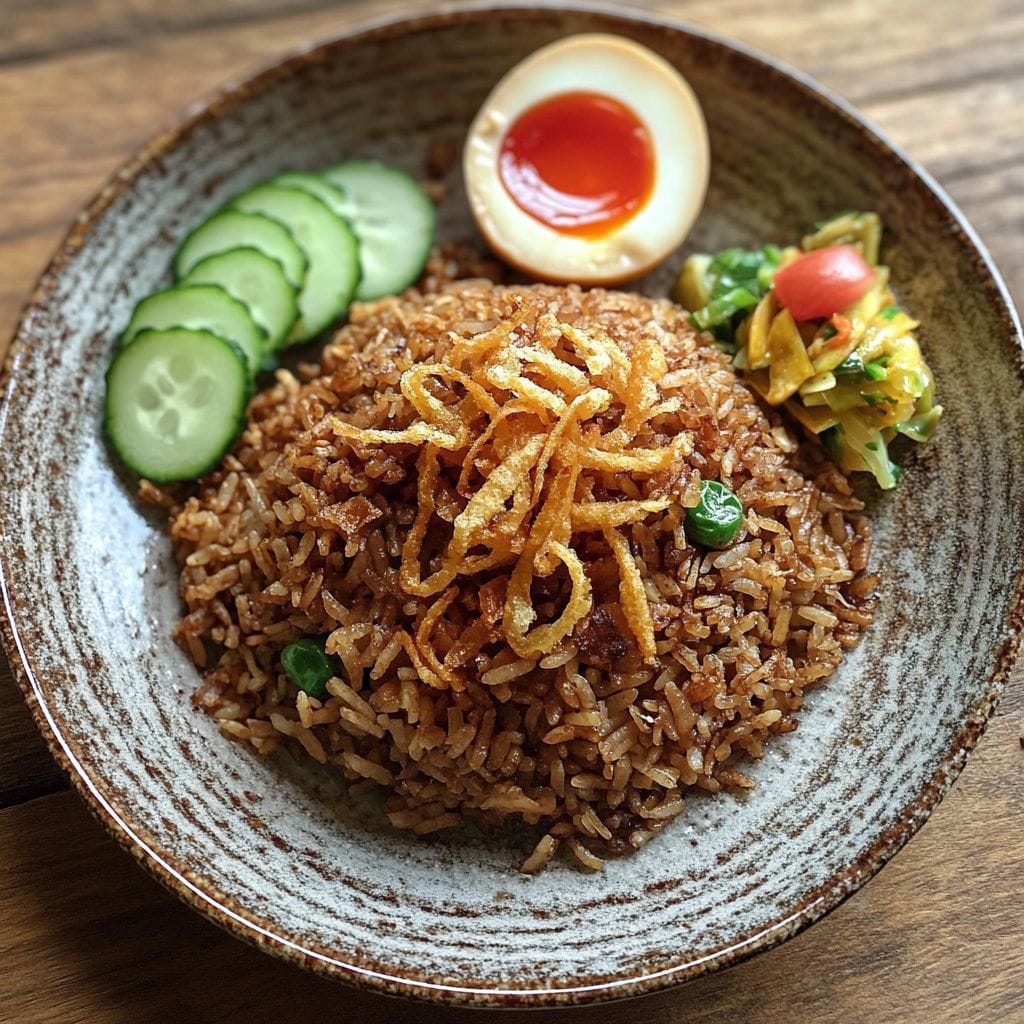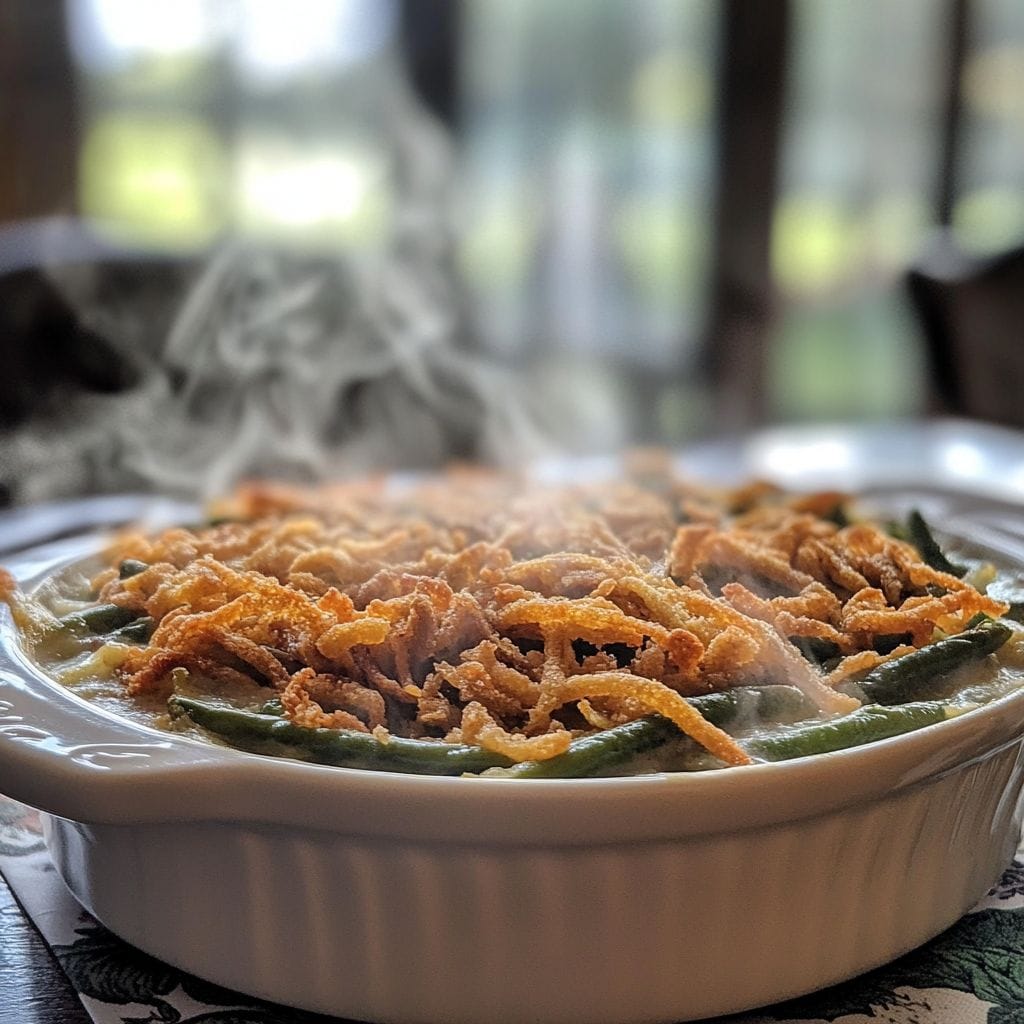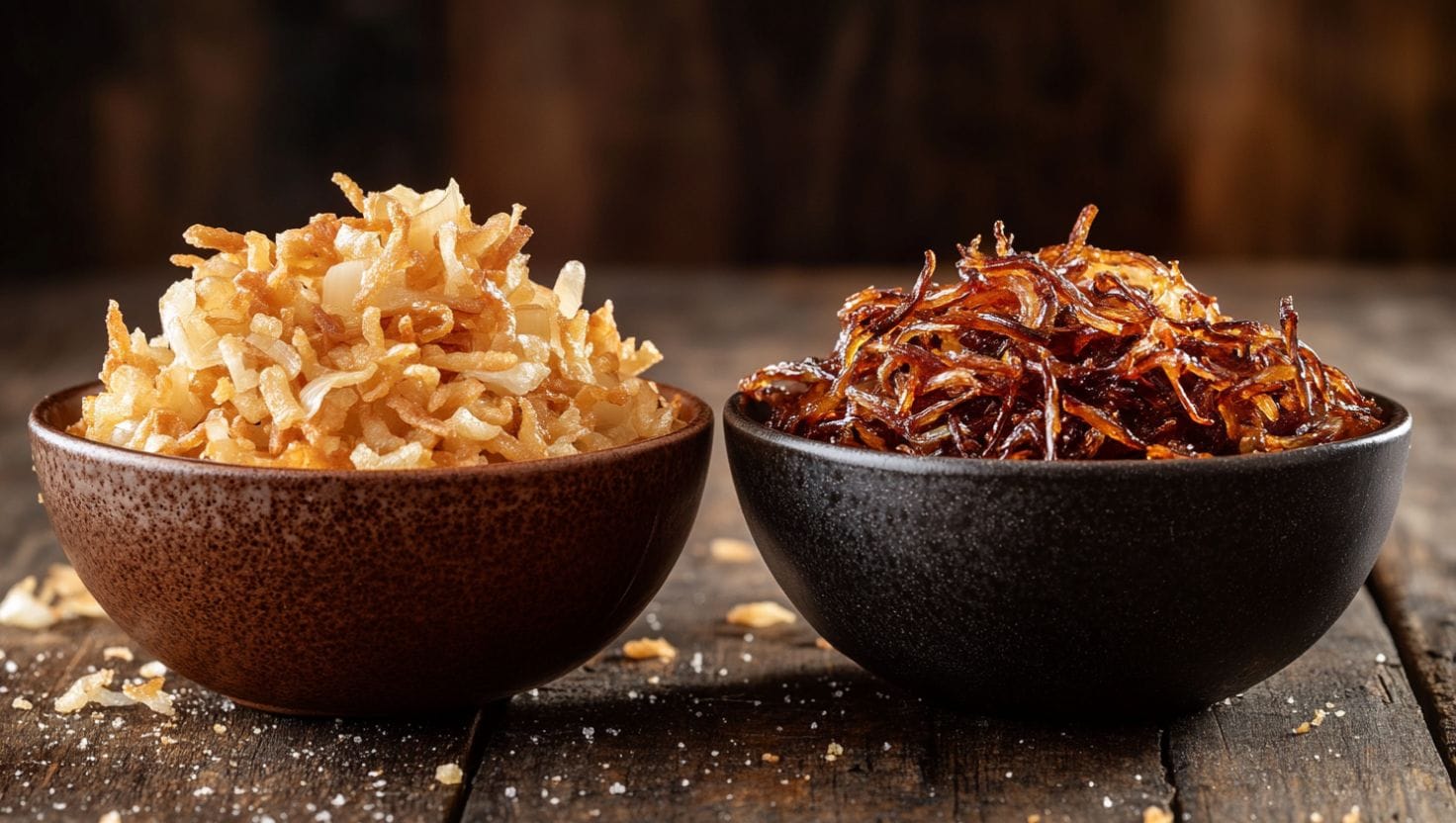Shallots and onions, both belonging to the allium family, are culinary staples worldwide. Despite their shared ancestry, they bring distinct flavors, textures, and characteristics to dishes. But when fried, do these differences persist, or do they blur into indistinguishable traits? Exploring whether fried shallots and fried onions are truly the same unveils a fascinating interplay of flavor, culture, and culinary tradition. So, is fried shallot the same as fried onions, or do these alliums have unique qualities even when prepared similarly?
Key Takeaways
| Aspect | Fried Shallots | Fried Onions |
|---|---|---|
| Flavor | Sweet, mild, slightly aromatic | Bold, robust, deeply savory |
| Texture | Light, crispy, delicate | Hearty, crispy with chewiness |
| Common Uses | Asian garnishes, salads, soups | Casseroles, burgers, side dishes |
| Cultural Context | Prominent in Southeast Asian cuisine | Popular in Western comfort foods |
Understanding Shallots and Onions
What Are Shallots?
Shallots are a small, elongated member of the allium family, boasting a purplish hue beneath their papery skins. With a mild sweetness and a subtle garlic-like undertone, shallots add a sophisticated flavor to dishes without overpowering them. They are often used raw in vinaigrettes or as a garnish, but frying transforms their delicate taste into a caramelized sweetness.
Moreover, shallots are revered in Asian cooking, where their crispy fried form serves as a garnish for noodle soups, stir-fries, and rice dishes. Their delicate texture and layered flavor make them a versatile ingredient.
What Are Onions?
Onions, available in varieties like yellow, white, and red, are a kitchen workhorse. While yellow onions are slightly sweet, white onions are sharper, and red onions are mild and colorful. When fried, onions develop a caramelized richness, taking on a golden hue and crunchy texture.
Not only do onions offer versatility in their use, but they also appear in cuisines globally. From sautéed onions in French onion soup to fried onion rings in American cuisine, they complement both casual and gourmet dishes.
Pro Tip: The type of onion you choose can drastically affect the dish. Yellow onions are ideal for frying due to their balance of sugar and acidity.
Is Fried Shallot the Same as Fried Onions?
Differences in Flavor and Texture
The primary distinction lies in flavor. Fried shallots are sweet and subtle, offering a crisp bite that enhances dishes without overwhelming them. In contrast, fried onions boast a more robust and savory flavor, making them the star of hearty comfort foods like green bean casseroles.
Texture-wise, shallots fry into delicate, featherlight crisps, while onions retain a slight chew beneath their crunch. This difference makes shallots better suited as garnishes and onions as foundational components.
| Aspect | Shallots | Onions |
|---|---|---|
| Sweetness | High | Moderate |
| Savory Note | Mild | Bold and pronounced |
Cultural and Culinary Contexts
Shallots hold a special place in Southeast Asian cuisine. For example, fried shallots are integral to dishes like mee goreng and nasi lemak. Conversely, fried onions are ubiquitous in Western dishes, adding depth to everything from sandwiches to Thanksgiving side dishes.
“Fried shallots bring a touch of sophistication, while fried onions pack a punch of hearty flavor.”
Flavor Profiles of Fried Shallots and Fried Onions
Sweet and Subtle Fried Shallots
When fried, shallots take on a golden hue and a light crunch. Their flavor, delicate yet complex, complements Asian-inspired recipes, including stir-fried noodles or curries. Shallots’ mildness allows them to enhance dishes without overpowering.
Bold and Robust Fried Onions
Fried onions deliver a punch of flavor. Their sweetness intensifies during frying, while their savory depth makes them ideal for robust dishes. Think crispy onion rings or as toppings for burgers and sandwiches. The transformation from raw to fried unlocks their full potential.
Comparison at a Glance:
- Shallots: Delicate, enhances subtle flavors.
- Onions: Bold, stands out in hearty dishes.
Nutritional Differences Between Fried Shallots and Onions
Caloric and Macronutrient Content
From a nutritional standpoint, both shallots and onions contain beneficial compounds. Fried shallots are slightly higher in sugar, which caramelizes during frying, adding a hint of sweetness. In comparison, fried onions have more water content and fewer natural sugars.
For a detailed breakdown of their nutritional value, check this nutritional comparison of shallots and onions.
Vitamins and Antioxidants
Both ingredients are rich in antioxidants and compounds like quercetin, which may support overall health. Shallots offer slightly higher levels of certain vitamins, including B6 and manganese, while onions excel in vitamin C content.
| Nutrient | Shallots | Onions |
|---|---|---|
| Vitamin C | Moderate | High |
| Antioxidants | High | High |
| Calories (per 100g) | Slightly higher | Slightly lower |
By understanding these subtle differences, cooks can better select ingredients for health-conscious dishes.
How to Fry Shallots and Onions Perfectly
Techniques for Frying Shallots

Frying shallots to achieve perfection requires attention to detail. Start by slicing the shallots thinly and evenly, ensuring consistent cooking. Heat a neutral oil, such as canola or vegetable oil, in a pan over medium heat. Once the oil reaches a shimmering stage, gently add the shallots, spreading them evenly to avoid clumping.
The key is to stir constantly. Shallots cook quickly, transitioning from golden brown to burnt in seconds. Once they reach a golden hue, remove them immediately with a slotted spoon and drain on paper towels to absorb excess oil. For more detailed tips, refer to this guide on tips for frying shallots.
Tip: Add a pinch of salt after frying to enhance flavor.
Tips for Frying Onions
Onions, due to their higher water content, require a slightly different approach. Slice the onions thinly but not too fine, as they shrink during cooking. Heat the oil similarly to frying shallots, but maintain a slightly lower temperature to allow the onions to cook through without burning.
Keep an eye on the onions as they start to caramelize. Stir occasionally to ensure even cooking. Unlike shallots, onions benefit from longer frying times to develop a deep, golden-brown hue. This gradual caramelization process intensifies their sweetness and creates a rich texture.
When asking, “Is fried shallot the same as fried onions?” this method highlights their differences. The cooking process itself amplifies their distinct textures and flavors, making each unique.
| Key Differences | Shallots | Onions |
|---|---|---|
| Slicing Technique | Thin and even | Slightly thicker for texture |
| Oil Temperature | Medium | Medium-low |
| Cooking Time | Quick, around 2–3 minutes | Longer, 8–10 minutes |
Cooking Applications for Fried Shallots and Onions
Popular Dishes with Fried Shallots

Fried shallots are a cornerstone of Southeast Asian cuisine, adding a burst of flavor and crunch to dishes like nasi goreng and pho. Their mild sweetness and delicate texture make them ideal as garnishes for salads, soups, and rice dishes. Moreover, in Western cooking, they often serve as an elegant topping for roasted vegetables and mashed potatoes.
Example Dishes:
- Mee Goreng (Indonesian fried noodles)
- Laksa (Malaysian curry noodle soup)
- French-style salads with vinaigrettes
Recipes Featuring Fried Onions

Fried onions, in contrast, are synonymous with comfort foods. They are a staple in casseroles, such as the classic green bean casserole, and as toppings for burgers, hot dogs, and sandwiches. Their robust flavor pairs well with hearty dishes like stews and chili, where they provide depth and texture.
When determining if fried shallots are the same as fried onions in cooking, these applications reveal that each excels in different culinary traditions. Shallots shine in lighter dishes, while onions dominate hearty comfort foods.
For creative uses, try incorporating fried onions into baked breads or savory pies. Their versatility extends to garnishes for creamy soups and as an essential component in dishes like biryani or pilaf.
| Popular Uses | Fried Shallots | Fried Onions |
|---|---|---|
| Regional Cuisines | Asian dishes | Western comfort foods |
| Best for | Garnishes, light salads | Burgers, casseroles, hearty meals |
Substituting Fried Shallots and Fried Onions
When to Use One Instead of the Other
Fried shallots and fried onions can sometimes be interchanged, but context matters. Shallots work better when a dish requires a delicate, sweet note, such as in Asian-style soups or gourmet salads. Onions, with their stronger flavor, shine in hearty, bold recipes like casseroles or baked dishes.
“Use fried shallots as a substitute when a dish needs subtlety, and rely on fried onions for robust, earthy flavors.”
Creative Alternatives to Fried Shallots
When shallots aren’t available, consider using fried garlic for a similar crisp texture with a stronger, pungent taste. Fried leeks or scallions can also mimic shallots’ delicate sweetness in garnishes. For onions, roasted or caramelized versions provide a comparable flavor profile in softer textures.
The question, “Is fried shallot the same as fried onions?” becomes even more complex when substitutes like fried garlic or leeks come into play. These alternatives emphasize how unique and versatile both shallots and onions can be in cooking.
| Substitute | Best for Fried Shallots | Best for Fried Onions |
|---|---|---|
| Fried Garlic | Asian soups, noodle dishes | Savory garnishes for stews |
| Fried Leeks | Light salads, creamy soups | Layered baked dishes |
Common Mistakes When Frying Shallots and Onions
Avoiding Burnt Shallots
Fried shallots can go from golden and crispy to burnt and bitter within seconds. To prevent this, it’s crucial to control the heat during frying. Medium heat is ideal, as it allows the shallots to cook evenly without scorching. Additionally, slice them as uniformly as possible to ensure consistent cooking.
Another key to avoiding burnt shallots is to stir continuously. Stirring keeps the pieces moving, preventing them from sticking to the bottom of the pan and overcooking. Remove them promptly once they turn light golden brown, as they continue to darken slightly after being removed from the oil.
Tip: If you’re frying shallots in large batches, do it in small portions to maintain proper temperature control.
Preventing Soggy Onions
Achieving crispy fried onions requires patience and attention to detail. Soggy results often come from overcrowding the pan or frying at too low a temperature. To avoid this, ensure the oil is hot enough before adding the onions. A good test is dropping a small piece of onion into the oil—if it sizzles immediately, it’s ready.
Drying the onions thoroughly after slicing also helps remove excess moisture, which can lead to steaming rather than frying. Once fried, drain them on paper towels or a wire rack to maintain crispness.
| Common Mistakes | How to Avoid |
|---|---|
| Overcrowding the Pan | Fry in small batches |
| Uneven Slices | Use a sharp knife for uniform thickness |
| Inconsistent Oil Temperature | Use a thermometer to monitor heat levels |
FAQs About Fried Shallots and Fried Onions
What Are the Main Differences Between Fried Shallots and Fried Onions?
Fried shallots are sweeter and milder, with a lighter and more delicate texture, while fried onions are bolder, more savory, and slightly heartier. These differences make fried shallots better for garnishes in light dishes, while fried onions suit heavier comfort foods.
Can I Use Fried Shallots in Place of Fried Onions?
Yes, but it depends on the dish. Shallots can replace onions in recipes requiring a subtle, sweet flavor, such as salads or Southeast Asian soups. However, they may not deliver the robust flavor needed in casseroles or burgers.
How Do I Store Fried Shallots and Fried Onions?
Both can be stored in airtight containers for up to a week. To keep them crispy, ensure they’re completely cooled before sealing. For longer storage, refrigerate or freeze them, but note that freezing may slightly affect their texture.
Are Fried Shallots Healthier Than Fried Onions?
While both are fried, the nutritional differences are minimal. Shallots have slightly more sugars and certain vitamins like B6, while onions are richer in vitamin C. The health impact depends largely on portion size and frying oil.
What Dishes Benefit Most From Using Fried Shallots or Fried Onions?
Fried shallots elevate dishes like pho, nasi goreng, or creamy soups with their sweet crunch. Fried onions are best for comfort foods such as green bean casserole, burgers, or as toppings for hearty soups and stews.
“Choosing between fried shallots and fried onions often depends on the dish’s flavor profile and cultural context.”
Final Thoughts on Fried Shallots and Fried Onions
While both fried shallots and fried onions bring unique flavors and textures to the table, understanding their differences allows cooks to make informed choices. Fried shallots offer a light, sweet, and crispy addition to delicate dishes, while fried onions provide a bold and savory crunch perfect for comfort foods.
Moreover, experimenting with both ingredients in different recipes can broaden your culinary repertoire. Whether you’re crafting an elegant garnish or adding depth to a hearty meal, these fried alliums are invaluable in the kitchen. So, is fried shallot the same as fried onions? Not quite—but each holds its place as a flavorful asset in cooking.
“Try using fried shallots and fried onions in your next recipe to discover how their distinct qualities elevate your dishes.”

